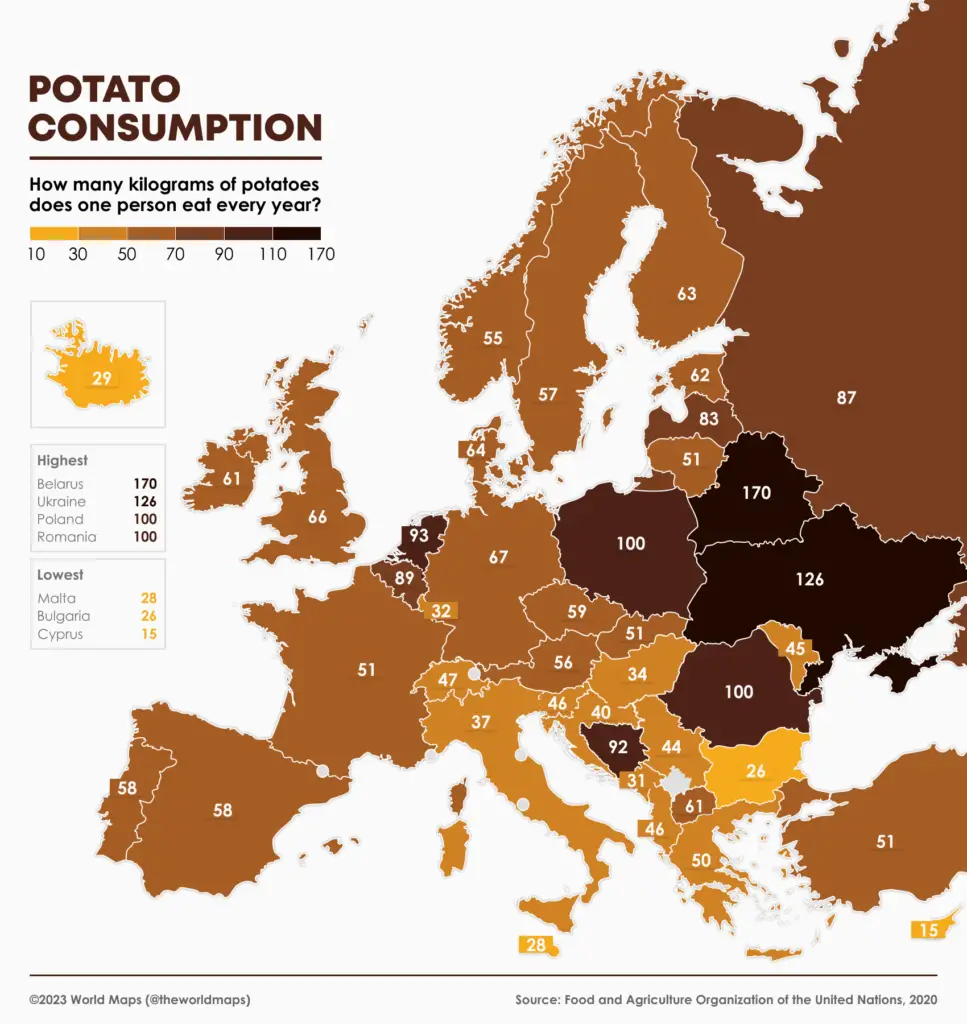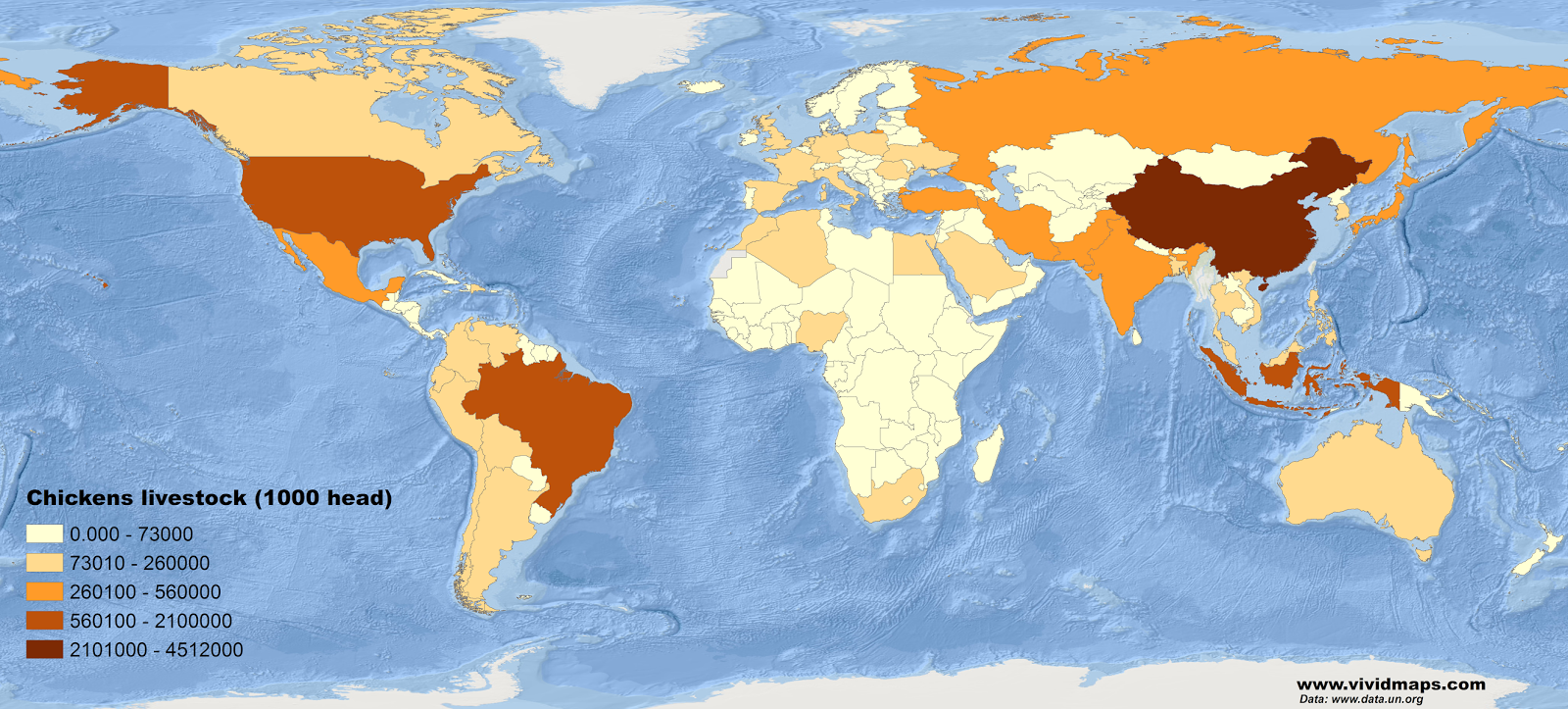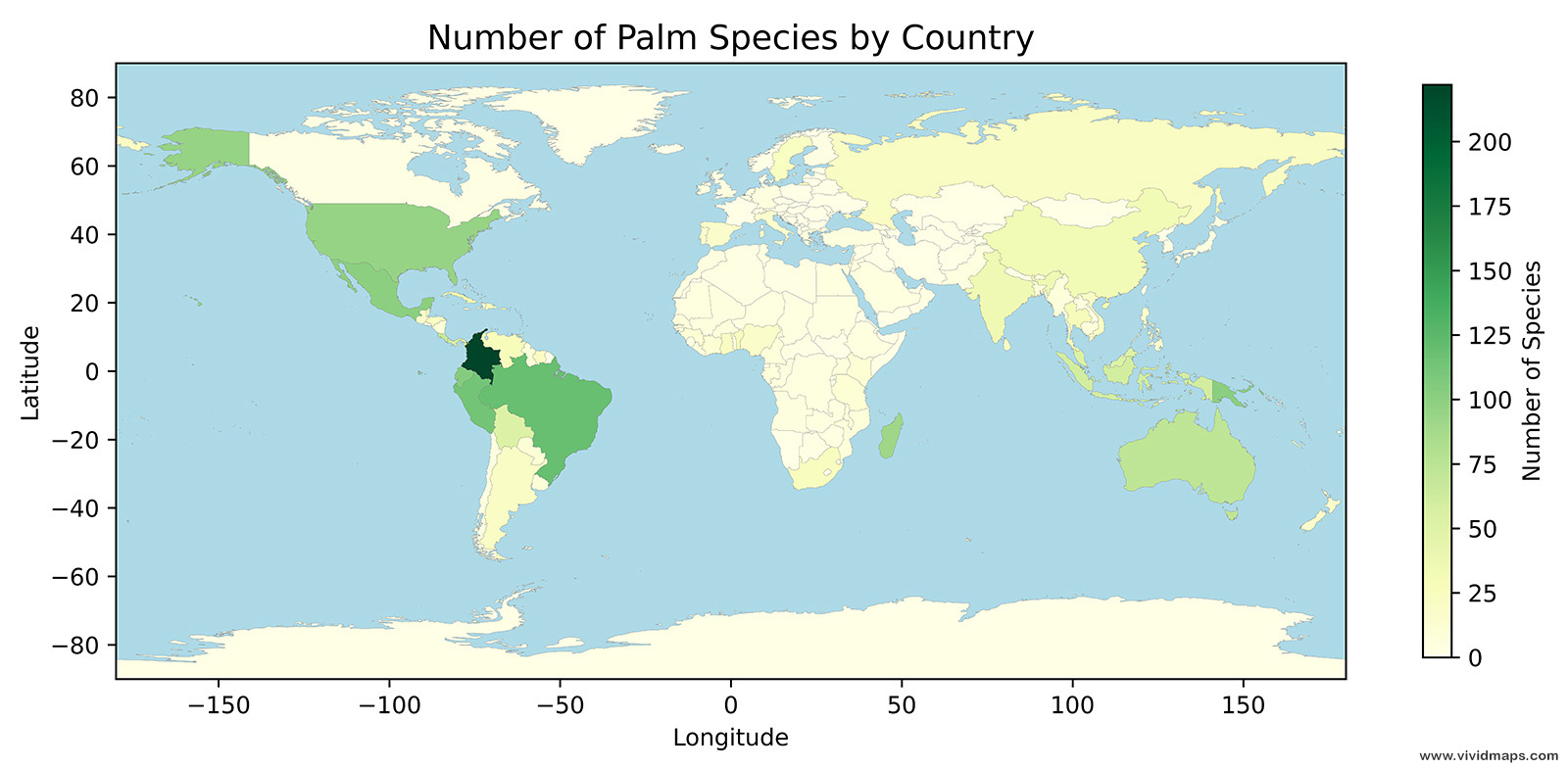Potato Consumption in Europe
The potato is native to the Andean region of South America, specifically the highlands of Peru and Bolivia. It has been cultivated by the indigenous peoples of the Andes for thousands of years and was brought to Europe by Spanish explorers in the 16th century.
Table of Contents
The uniqueness of potatoes
Potatoes are unique in several ways:
- Variety: There are over 4,000 varieties of potatoes, each with its own unique shape, size, and color.
- Nutrition: Potatoes are a rich source of complex carbohydrates, vitamins (especially vitamin C), minerals (including potassium), and dietary fiber.
- Adaptability: Potatoes can be grown in a wide range of climates and soils, and can be cultivated in different ways such as planting them directly in the ground, in raised beds, or even in containers.
- Versatility: Potatoes are a highly versatile ingredient in cooking and can be boiled, baked, fried, mashed, or roasted to create a wide range of dishes.
- Importance: Potatoes are one of the most important food crops in the world and are a staple food for millions of people. They are also used in animal feed and for industrial purposes, such as making starch, alcohol, and biofuels.
Overall, the potato is a highly adaptable and nutritious crop that has played a significant role in human history and continues to be an important food source today.

Potato consumption in European countries
Potatoes are a widely consumed food in European countries, with varying consumption patterns and preparation methods. Here are some characteristics of potato consumption in European countries:
- High consumption: European countries are among the highest consumers of potatoes in the world, with some countries like Belarus, Ukraine, Poland and Romanino having a particularly high consumption rate.
- Preparation methods: Potatoes are commonly consumed in various forms, such as boiled, mashed, roasted, fried, and baked. They are also used as a key ingredient in many traditional dishes, such as French fries in Belgium, fish and chips in the United Kingdom, and gnocchi in Italy.
- Seasonal consumption: In some countries, such as Sweden and Finland, potatoes are mainly consumed during the winter months when fresh vegetables are not as readily available.
- Cultural significance: Potatoes have a long history in European cuisine and are often associated with national and regional identity. For example, potatoes are an important part of Irish cuisine and have played a significant role in the country’s history.
- Health concerns: In recent years, there has been some concern about the health impact of potato consumption, particularly in the form of fried and processed potato products. As a result, some European countries have introduced measures to promote healthier potato consumption, such as encouraging the consumption of boiled or baked potatoes instead of fried ones.
The map below created by @theworldmaps shows how many kilograms of potatoes does one person eat every year in Europe, using Food and Agriculture organization of the United Nations (FAO) data.

Interesting facts about potatoes
- The Incas in Peru were the first to cultivate potatoes over 7,000 years ago.
- Potatoes were not always popular. In fact, when they were first introduced to Europe in the 16th century, many people thought they were poisonous and would not eat them.
- Potatoes are the world’s fourth-largest food crop, after maize, wheat, and rice.
- The first potato planted in North America was in New Hampshire in 1719.
- The famous Irish potato famine in the 1840s led to the deaths of over a million people and the emigration of millions more.
- Potatoes can be used to power a light bulb! By creating a battery using a potato, two electrodes (usually copper and zinc), and wires, you can generate enough electricity to light up an LED bulb.
- Potatoes are a rich source of vitamin C, potassium, and dietary fiber, and are also low in calories.
- The world’s largest potato weighed in at 18 pounds, 4 ounces, and was grown in the United Kingdom in 1795.
- There is a potato museum in Brussels, Belgium, called the Frietmuseum, which is dedicated to the history and culture of potatoes and the Belgian tradition of making fries.
- The term “couch potato” was first coined in the 1970s to describe someone who spends a lot of time sitting in front of the TV or computer, like a potato sitting on a couch.








